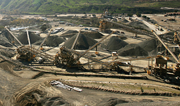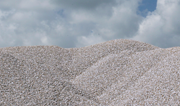Construction Materials
Architects and Builders
Vulcan focuses on helping architects, builders, and engineers achieve their design and building objectives. As design innovations and environmental sensibility continue to evolve, we understand the need for sustainable, low carbon concrete products that perform and help translate innovative designs into structural forms, while reducing environmental impact.
In the simplest term, concrete conserves resources by reducing the need for reconstruction, but that is not what concrete is all about. Increasingly, concrete is being recognized for it’s life cycle environmental and economical benefits, from extraction and production, to construction, maintenance and disposal.
Furthermore, architects and engineers are discovering the advantages of concrete construction as the quality construction material that stands the test of time. The emerging concrete technologies are opening new possibilities for concrete architecture, and inspiring contemporary architects and designers around the world.
The use of concrete in buildings has many benefits that span all stakeholders.
- For designers – Not only has concrete proved to be the material of mass structures, but also has become architectural facades, surfaces, and even furniture – the possibilities of its applications seem to be getting broader every day.
- Concrete can help achieve LEED certification.
- Recycled materials in concrete reduce CO2 emission.
- Concrete pavement can be used to reduce urban heat islands. Concrete’s light color reflects more energy and absorb less heat, thereby reducing energy usage and costs.
- Pervious concrete helps conserve storm water runoff by offering a porous structure that allows rainwater to pass directly through the pavement and into the soil naturally.
- Optimization of a concrete mix by aggregate type can reduce the deflection of concrete to increase span length for more usable floor space.
- Concrete’s superior strength protects against storms and natural disasters. Additionally, concrete construction offers a high level of fire resistance.
- The availability of materials with on-site or cast-in-place concrete provides project managers with significant time savings, and design flexibility as opposed to long delivery time or sizing ordered far in advance of placement with other structural materials.
Concrete and LEED
The use of concrete can help qualify for credits under Leadership in Energy and Environment Design (LEED).
How can concrete help in earning points toward LEED certification?
LEED points are not earned for use of a particular material or product, but using concrete as part of sustainable building strategies will help earning points toward certification.
Vulcan solutions can help contribute to earning LEED credits in a particular category.
|
LEED Credit |
Title |
Vulcan Materials Solutions |
Possible Points |
|
Storm Water Management |
Pervious Concrete |
3 |
|
|
4.1, 4.2 |
Recycled content |
EF Technology ® concrete mixes |
2 |
|
1 |
Optimize Energy Performance |
The main energy benefits of using concrete in building is its high thermal mass which leads to thermal stability |
11 |
|
7.1 |
Heat Island Effect |
Concrete parking Lots and Pavements |
1 |
|
5.1, 5.2 |
Regional Materials |
Vulcan Materials develops mix designs using locally available materials that reduce transportation time and therefore, CO2 emission |
2 |
|
2.1, 2.2 |
Construction Waste Management |
Ultrablock. Recycled “returned concrete” to produce the Ultrablock LOCK-BLOCK® Retaining Wall System.We crush and reuse concrete as aggregates for pavement base |
2 |
|
8.1, 8.2 |
Daylight & Views |
Concrete’s superior strength can help architects build column- free, longer structures with more floor spaces. This allows more light into interior spaces and maximize interior lighting and views |
2 |




